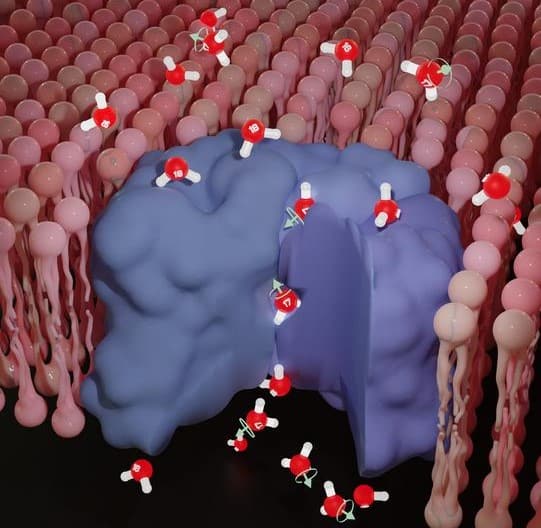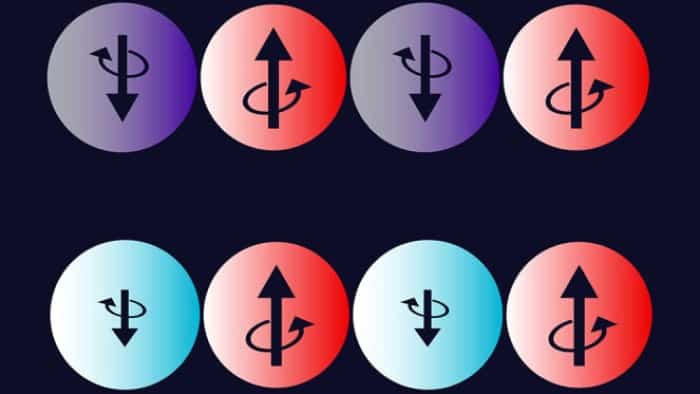
The effect that nuclear spins have on certain biological processes has been observed for the first time by researchers in Israel. The team led by Yossi Paltiel at the Hebrew University of Jerusalem performed two experiments that showed how interactions between oxygen isotopes and chiral biomolecules depend on the isotopes’ nuclear spin.
Many processes in the natural world are affected by the spin of electrons — including photosynthesis, and the ability of some animals to sense Earth’s magnetic field. Until recently, however, it had been assumed that the spins of nuclei do not affect biological processes.
Now, Paltiel’s team has found that nuclear spin can affect how different isotopes of oxygen interact with chiral biomomecules.
Probing chirality in life
“Our research probes the rule of chirality in life,” Paltiel explains. “We are currently investigating the effect of ‘chiral induced spin selectivity’ (CISS), which establishes a link between electronic spin and chirality.”
Chirality is an asymmetrical property held by an object that cannot be mapped onto its mirror image using rotations and translations. A familiar example is the human hand. Indeed, chiral is derived from the Greek word for hand and chiral objects are referred to as being either righthanded or lefthanded.
Many important biomolecules can exist in righthanded and lefthanded versions, but one chirality tends to dominate in nature. CISS means that electrons with spins in a certain direction (say, up) will interact with a chiral molecule in a different way than electrons with spins in the opposite direction (down).
Oxygen isotopes
Now, Paltiel and colleagues have shown that nuclear spins are also relevant to CISS. The researchers set up two experiments involving three stable isotopes of oxygen. These are oxygen-16 and oxygen-18, which both have zero nuclear spin, and oxygen-17, which has a nuclear spin of 5/2.
Their first experiment involved the electrolysis of water: a vital process in photosynthesis. Here, the team generated a spin-selective electron current using the CISS effect. This was done by coating the anode with a layer of molecules with uniform chirality. The anode is where oxygen molecules are produced by electrolysis and it is known that this production is enhanced when a spin-selective electron current is used.
The water used in the experiment contained the three oxygen isotopes and the researchers analysed the isotopic composition of the oxygen that was produced to see if this was affected by nuclear spin. They found that significantly fewer oxygen molecules containing oxygen-17 were produced when the chiral coating was used than when a bare anode was used. This, the team says, shows that CISS can also involve nuclear spins.
Water transport
In the second experiment, Paltiel’s team looked at the transport of water through the membranes of living human cells. Within a cell membrane, water is transferred through special proteins called aquaporins, which prevent other ions or solutes from passing through with the water.
The molecules responsible for this selectivity are chiral and therefore offer a way of testing if CISS is involved in the water transport process. The researchers looked at how water molecules containing oxygen-17 and oxygen-18 are transported through aquaporins. They found that there was a clear preference for the transport of one isotope over the other, again showing that CISS is involved in the transport of water through human cells.

Chirality affects current flow in graphene transistors
“Our research demonstrates that nuclear spin plays a crucial role in biological processes, suggesting that its manipulation could lead to ground-breaking applications in biotechnology and quantum biology,” Paltiel says. “This could potentially revolutionize isotopic fractionation processes and unlock new possibilities in fields such as NMR [nuclear magnetic resonance].”
NMR involves probing the nuclear spins in a material using external magnetic fields – but so far, the magnetic isotopes in biological systems suitable for the technique other than hydrogen have been extremely rare and difficult to purify. The team’s discovery presents a possible method to enrich the magnetic isotope oxygen-17 in biological systems – which could then be detected using NMR.
The researchers believe that their experiments only scratch the surface of the effects of CISS and nuclear spin. They hope that the further exploration of nuclear spins in biology could lead to exciting applications.
The research is described in Proceedings of the National Academy of Sciences.
